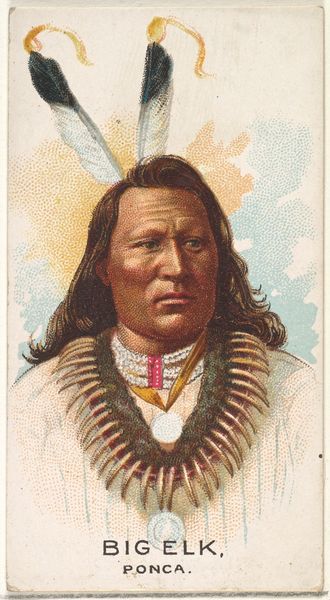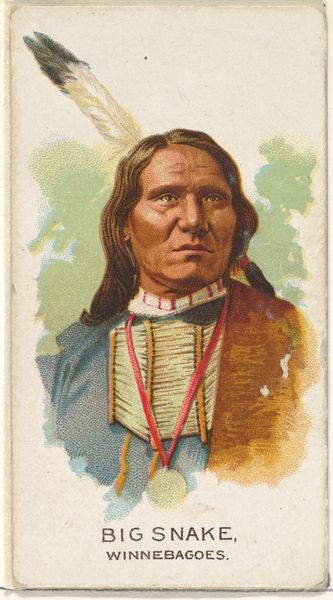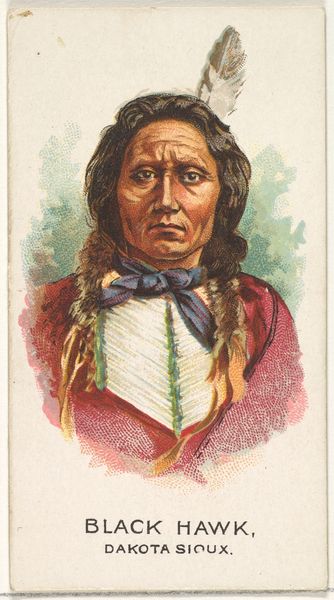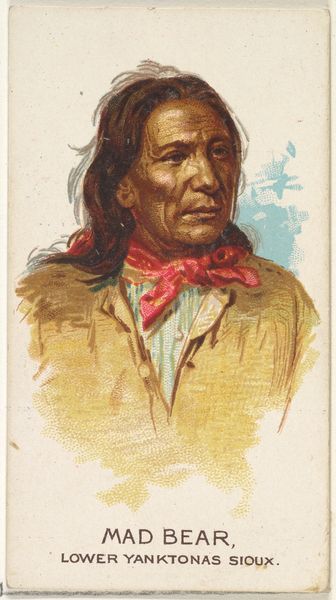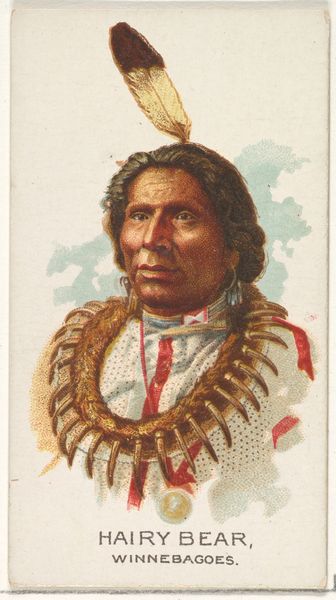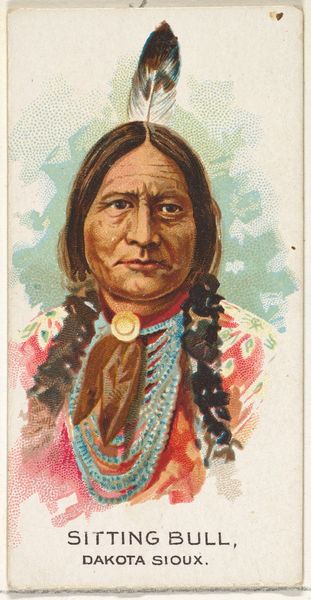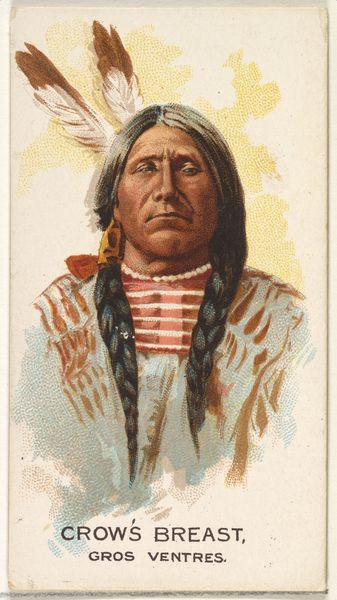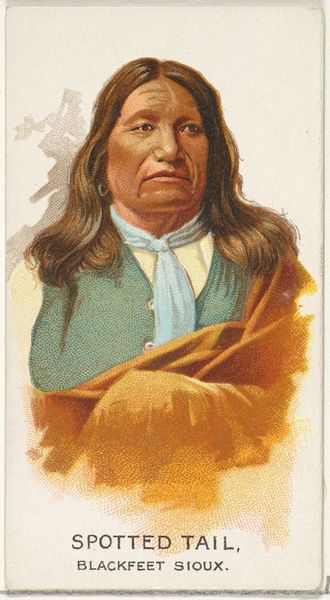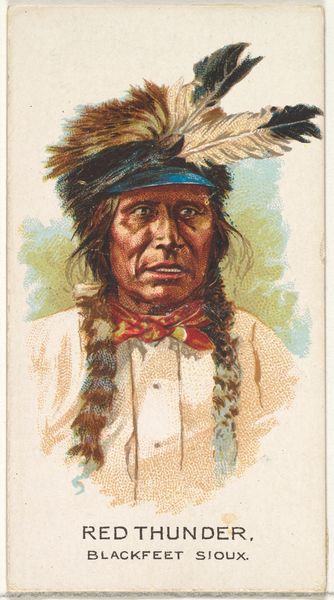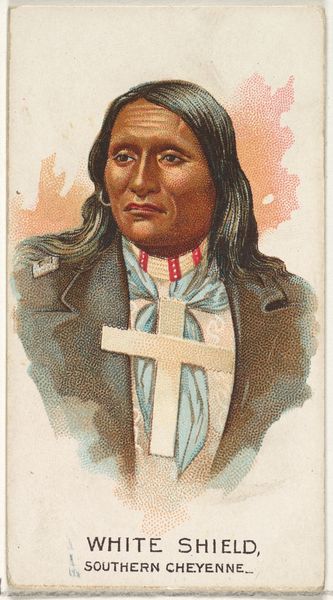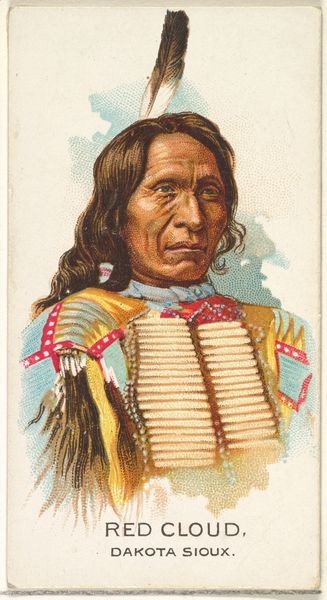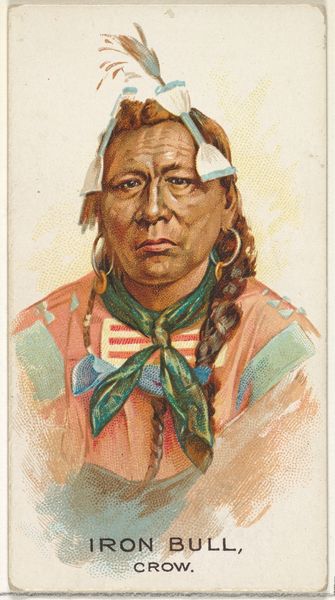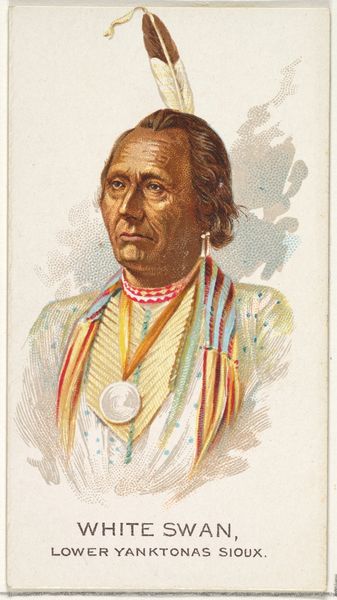
John Grass, Blackfeet Sioux, from the American Indian Chiefs series (N2) for Allen & Ginter Cigarettes Brands 1888
0:00
0:00
drawing, print
#
portrait
#
drawing
# print
#
caricature
#
men
Dimensions: Sheet: 2 3/4 x 1 1/2 in. (7 x 3.8 cm)
Copyright: Public Domain
Curator: I find myself immediately struck by the gravitas in his eyes, there is also a stoic stillness. Editor: Indeed. We’re looking at "John Grass, Blackfeet Sioux" from 1888, part of the "American Indian Chiefs" series created by Allen & Ginter, the cigarette company. These were printed and included in packs as collectible trading cards, made accessible for many people. Curator: Cigarette cards. How ubiquitous images become vessels of culture! His traditional braids, coupled with the modern Western suit he wears, speaks volumes about the cultural collision during that time. What symbols can be understood by considering that collision? Editor: It is worth thinking about the political implications. Think about the act of reducing a leader, a figure of authority and tradition, to a commodity, circulated to increase tobacco sales, the cards served to create an easily consumed representation of Indigenous people during a period marked by rapid assimilation policies. Curator: He seems burdened with unspoken narratives. I imagine this image sparked both curiosity and perhaps a subtle reinforcement of existing power structures at the time. There is some emotional dissonance when I consider the violence suffered by Indigenous peoples throughout history. Editor: Exactly. While the images might have intended to familiarize a wider audience with prominent Indigenous leaders, they inevitably framed them within the colonial gaze and context. This form of popular imagery normalizes and perpetuates particular attitudes. Curator: Images shape memory; the mass-produced cards would've shaped it in very complex ways. But also thinking about the potential influence on people now to seek out more information and develop respect from seeing the depiction. Editor: We have to contend with the problematic nature of its origins while exploring the possible insights to be derived about our perception. A reminder to look closely, not just at what is presented, but how and why. Curator: Precisely, every line and shade carries a story that demands careful consideration. A window, perhaps darkly tinted, but a window nonetheless.
Comments
No comments
Be the first to comment and join the conversation on the ultimate creative platform.
